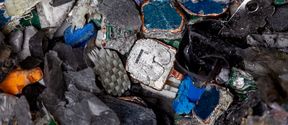1. Food production is a complex system, and changing one element can have unintended consequences
Global food production is a complex arrangement of interconnected systems, and policy decisions need to take this into account. For example, many countries have encouraged the production of biofuels to reduce the dependency on fossil fuels, but this has made less cropland available for food production, contributing to increased food prices and compromising food security. Another example is the prioritisation of high-yielding crop varieties, which aims to increase production but has led to a loss of biodiversity and crop diversity, making crops more vulnerable to pests and diseases. Understanding these interconnections is even more important when dealing with the interactions between finely balanced food production systems and climate change. In many instances – such as in European and North American countries – one of the most effective policies would be to encourage dietary changes towards plant-based protein sources.
2. Food systems are responsible for one-third of greenhouse gas emissions
A good starting point for reducing emissions from food systems is improving the sustainability of food production. ‘Food systems impact the globe more than any other human action,’ says researcher Vilma Sandström. Food production takes up nearly half of the habitable land and is responsible for 70% of freshwater withdrawals and nearly 60% of the world’s biodiversity loss. Taken together, production, processing, transport and waste management account for one-third of global greenhouse gas (GHG) emissions. ‘Conversion of forests to agriculture is still one of the biggest emission sources from food production, especially in developing countries,’ says researcher Mika Jalava.
3. One-third of global food production is at high risk from climate change if we don’t change course
Farming requires the right climatic conditions, with the temperature, aridity and rainfall all remaining within a certain range. If we don’t reduce GHG emissions, climate change will force around a third of current farmland out of this ‘safe climactic space’ by 2090. Worse yet, most of this change will happen in areas that have the highest population growth and are also the least resilient to disruptions in food supply – primarily sub-Saharan Africa and South Asia. This means that it’s crucial that we increase food production security while also reducing emissions.
4. We know how to provide food for several billion more people while dramatically reducing GHG emissions
Changes in livestock and fish production would free up enough food for a billion people, according to a recent study led by Sandström. We currently use one-third of cereal production and one-quarter of fish production to make animal feed. Replacing this with by-products from human food production—such as leftovers from producing fruit juice, dairy products and meat—would increase the global food supply by 13-15%. That’s enough food for about a billion people. These gains could be doubled by reducing losses in the food supply chain. A 2012 study led by Professor Matti Kummu showed that around 25% of food production is lost in harvesting, processing and distribution. Producing the lost food still emits GHG, so reducing the losses would bring down the emissions per calorie of consumed food. Altogether, reducing waste, producing food more efficiently and changing dietary habits would feed more people while averting 0.5 °C of warming over the next century.
5. Our planet can support food production for 10 billion people
The researchers’ work has shown that by carefully managing resource and using efficient, low-waste agriculture and low-meat consumption, we could produce enough food for 10 billion people. Their analysis even shows that we could do this while reversing biodiversity loss and reducing fertiliser use and water extraction from rivers. Accomplishing this calls for different adjustments in different areas. In Europe and North America, the greatest gains would come from switching diets to foods with a lower environmental impact, while countries in sub-Saharan Africa would benefit most from improving yields by increasing nutrient and water input. Changes in land use–in most cases moving from grazing to crop cultivation–would also increase food production globally, though care is needed to avoid unintended consequences.







